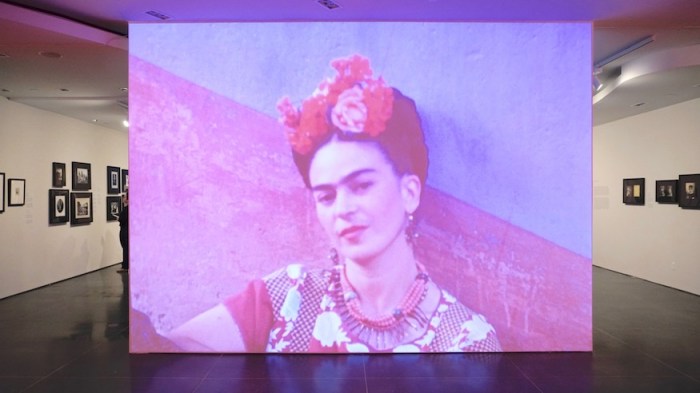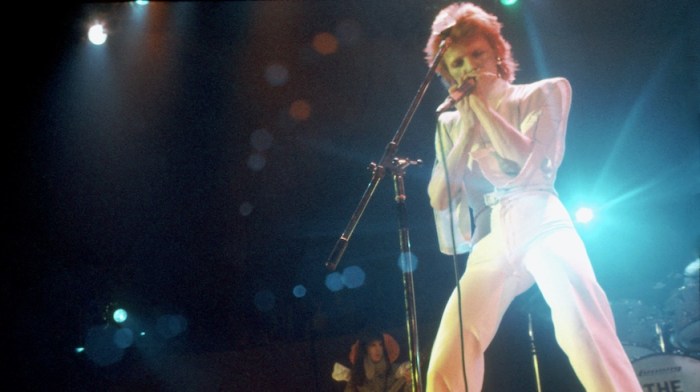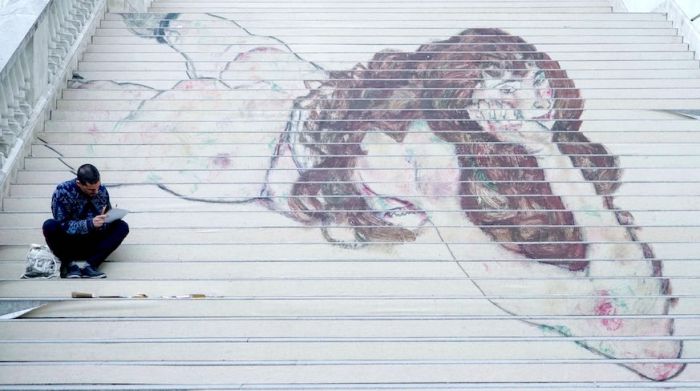When the massive David Bowie Is retrospective art show opened in London in 2013, he was still alive and would release two more albums, “The Next Day and “Blackstar,” the latter dropping days before his death in Manhattan in January 2016.
When the exhibit, curated by London’s Victoria and Albert Museum, makes its final stop on a five-year world tour at the Brooklyn Museum beginning this month, Bowie’s immense legacy will be portrayed from beginning to end.
Just like the man himself, “David Bowie Is” adapted along the way and includes artifacts highlighting his ties to America and New York, and some from his final masterwork, too. A whole, unimaginably vast life is on view.
“You need about a week to see it, it’s so huge,” says Bowie’s friend and producer Tony Visconti. “It’s a tribute to his legacy: a 50-year career. It was a huge undertaking.”
Visconti, who grew up in Bensonhurst and now lives in Brooklyn, met Bowie in London in 1967 and went on to record 14 albums with him, including the magnificent finale.
“David wasn’t involved in putting together the exhibit, but he allowed his collection to be used. We were making ‘The Next Day’ at the time. He knew these were the best curators who understood the value of these items. He saw it after it opened and it overwhelmed him. He just looked up; he didn’t have the words.”
It’s not surprising that even Bowie himself would be overwhelmed by what he’s meant to the creative world over his career. There’s music, from pop to avant-garde jazz; acting, both stage and screen; and performance and visual art. And, of course, those famous costumes for Ziggy Stardust, Aladdin Sane and the Thin White Duke.
“He considered himself an actor. When he was Ziggy, he was David Jones acting as Ziggy. He would go into character,” says Visconti.
“He was truly eclectic and constantly searching. He was very well informed, very well read. He was always exploring other things and using it. Once, he was reading a book on rare china. Who reads about china tea sets? He had an inquisitive mind.”
Exploration seemed essential for Bowie: “He was a true renaissance man. He was a painter himself. I just learned he also designed wallpaper,” says Visconti, astounded. “This is the first time it will be shown.”
It was music that turned out to be his most powerful tool, though: “He always said you could find out anything about him through his music and his lyrics. This exhibit will have plenty of… what do they call them? Easter eggs. People will be analyzing his lyrics to decades to come.”
Bowie challenged not only musical and artistic boundaries, often drawing vehement negative criticism, but also gender and societal ones, too. The term gender benders came up during the glam rock era in Great Britain, a movement he rose to dominate and transcend.
Visconti says the exhibit is a galvanizing experience: “I went with my friend Marc Almond of Soft Cell and he left after 45 minutes. It was just too emotional for him.
“For some fans, their whole life is David Bowie; he was their god. He was larger than life. He liberated millions of people.”
David Bowie Is runs from March 2-July 15 at the Brooklyn Museum, 200 Eastern Parkway. Tickets are available now from $20-$2,500.























